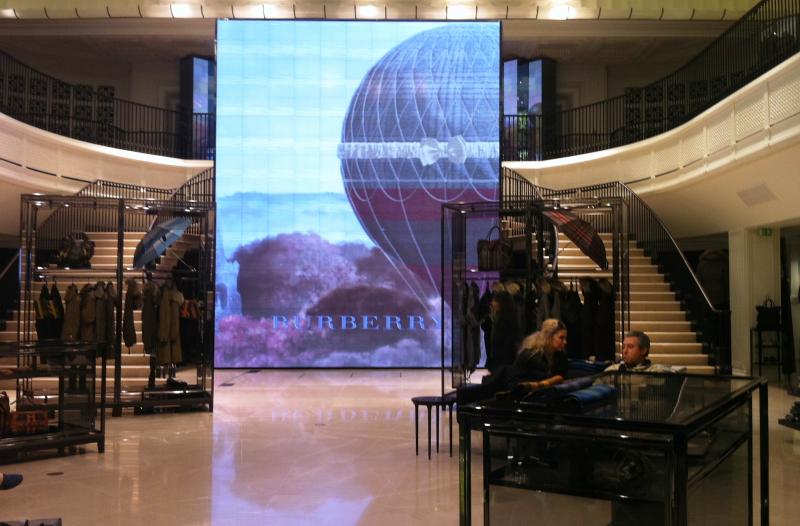Burberry’s Digitally Enabled Store Is Seductive, But Is It Really “Agile Commerce”?
There are a few firms that I regularly point to as agile commerce exemplars, and one of them is Burberry.
This always makes me smile because being from the north of England and growing up in a culture dominated by shipbuilding and football (and Newcastle Brown Ale), Burberry has long been the iconic garb of the “chav.” Since many of the people who read this blog aren’t from the UK, a quick cultural diversion is probably needed here. But don’t worry – it's relevant to the Burberry story. Honest.
There are many explanations as to the origin of the word “chav,” but the definition of the word is well understood in the UK. Young, antisocial, unemployed, most likely criminal, and most definitely clad in the iconic Burberry check. It's the last thing that any brand wants to be associated with, not least a high-end brand with 150 years of heritage as an outfitter to Arctic explorers and army officers. But Burberry has done an amazing job of transforming its brand image to shake off its chav following (almost), placing itself back at the forefront of British luxury fashion and most definitely in the vanguard of digital innovation.
Coinciding with London Fashion Week, Burberry has launched a new London flagship store on Regent Street. This is a digitally enabled store, so given that we’ve both spoken on this subject in the past, fellow eBiz Analyst Peter Sheldon and I headed on down there yesterday to flash our luxury shopping credentials and to see just how impressive the place is.
The answer – very.
Architecturally stunning and beautifully appointed, the store feels more like a museum than a retail space. Customer service was first class – a stark comparison to Belstaff where I actually attempted to buy a jacket last week and was so stunned by the ineptitude, rudeness, and lack of knowledge of their London flagship store staff that I actually walked out of the store and ended up buying a vintage jacket on eBay rather than give them my money. At no point did Belstaff's staff recommend I look at their website or suggest they could order items for me that they didn't hold in their starkly stocked store. Contrast this to Burberry’s iPad-armed sales folks who were only too happy to show us products online, give us their iPad so we could browse ourselves, and couldn’t be more helpful – even when we told them we were industry analysts, not potential customers!


The experience is first class, with six-foot-high digital screens activated via RFID tags in 95% of the stock to stream digital content from Burberry’s website, catwalk videos, and even short films on how the products are made as you approach the screens with an item. There are a few traditional tills, but most payment is done in person with the sales associate via a traditional PDQ device, not off the iPad, and fitting rooms are armed with similar digital displays to subtly show you what other garments would match what you are currently wearing.

But where the whole things was lacking for me was in the multichannel integration. Associates have no access to CRM data on customers. There’s no way (other than with an associate’s iPad) for a customer to access their online account, pull up their wish list, or pre-shop in a connected way. Online social content isn't really represented, despite Burberry's massive social campaigns such as the Art of the Trench. There’s no online payment integration – so while you can pay in euros or with Union Pay, you can’t use PayPal. And mobile and customer iPad apps don’t really feature in the mix. In fact, we were quite surprised that there isn’t an Burberry iPad app at present.
What we have in Burberry’s new store is a fantastic example of a digitally enabled store. A store that is designed to showcase products and that enhances the store experience through slick use of appropriate digital content. It's easy to engage with, and while we were there, we saw dozens of examples of both the sales assoicates using their iPads to "clientel" and shoppers playfully engaging with the products through the digital displays. But it's not an agile commerce store in the sense that it fully supports a multitouchpoint experience. It's good. It's seductive. It's compelling, and it makes you want to buy. And I suspect there is more to come.
And no nasty plaid to be seen.
